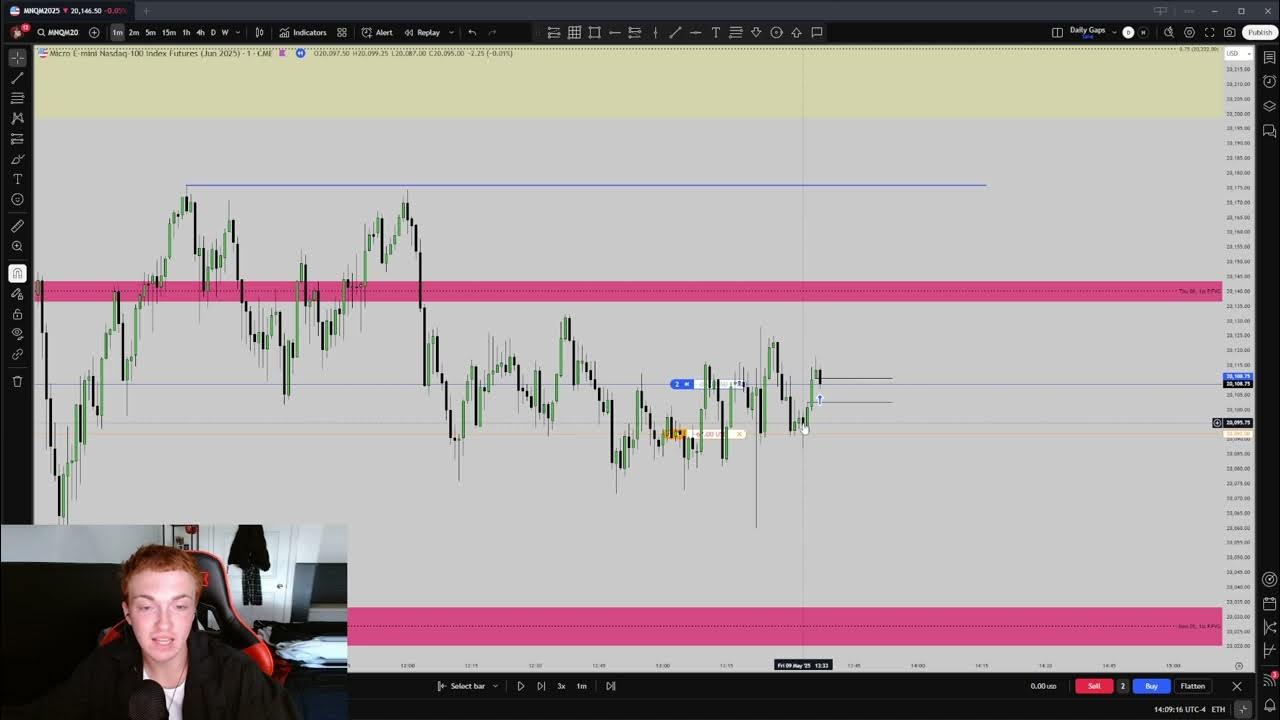How to BACKTEST PROPERLY | ICT Concepts (6 Steps)
Summary
TLDRIn this video, the creator shares essential tips for properly backtesting a trading strategy. The process involves writing clear rules, selecting appropriate trading pairs and platforms, and considering economic events. The video emphasizes maintaining a detailed backtesting journal that includes trade ideas, entry reasons, and results. Common mistakes like failing to check fundamental events or not following trade management rules are highlighted. The creator also shares their personal backtesting method, showing how to track and learn from mistakes. This approach helps refine strategies, improve execution, and optimize trading plans for better results.
Takeaways
- 😀 Start by writing down all the rules for your strategy, including time to trade, analysis steps, execution criteria, and trade management rules like stop-loss placement and take-profit levels.
- 😀 Choose the pairs or markets you'll focus on during your backtesting to stay consistent and track relevant performance.
- 😀 Select the platform or tool for backtesting that you're comfortable using to ensure effective data tracking.
- 😀 Pick the time period for your backtesting, ensuring you have enough historical data to accurately assess your strategy's performance.
- 😀 Use an economic calendar, like Forex Factory, to filter and check high and medium-impact news during your chosen backtest period to avoid fundamental surprises.
- 😀 Keep a backtesting journal to track every trade, including top-down analysis, entry reasoning, trade management, and results.
- 😀 Record your win rate, risk-to-reward ratio, trade duration, and other important metrics in your trading plan for future evaluation and optimization.
- 😀 Include metrics like the number of trades per month and day of the week/time of execution in your journal to refine your strategy and meet prop firm criteria.
- 😀 Review your trades regularly, noting mistakes and areas for improvement, such as moving stop-loss too early or missing a trade due to poor execution.
- 😀 Don't be afraid to make mistakes during backtesting, but ensure they are reviewed and corrected to minimize their impact on future trades.
- 😀 Continuously refine your execution and strategy by reviewing both successful and missed trades, adjusting your plan based on what you've learned from the backtest.
Q & A
What are the three most common mistakes people make when backtesting a trading strategy?
-The three most common mistakes are: backtesting outside of your chosen time frame, not having clearly defined rules for strategy analysis and trade management, and failing to account for fundamental events.
Why is it important to write down the rules for your trading strategy before backtesting?
-Writing down the rules ensures you have a clear framework for making decisions, which helps you stay consistent and objective in your analysis and trade management. It also allows for accurate performance tracking.
What are the key components of trade management that should be clearly defined in your strategy?
-Key components include where to set your stop-loss, where your target profits (TP1, TP2, TP3) should be, when to move your stop-loss to break-even, and how you will handle partial profits (e.g., 50%, 30%).
How can you ensure your backtesting is as realistic as possible?
-To make backtesting realistic, you should follow a structured approach, choose the right tools and platforms, consider economic calendar events, and stick to your strategy’s execution rules without deviations.
Why should you choose specific currency pairs when backtesting?
-Choosing specific currency pairs helps focus your efforts, allows for deeper analysis, and ensures consistency in your backtesting results. This way, you can refine your strategy on the pairs that you are most likely to trade.
How do you incorporate fundamental events into backtesting?
-You should check an economic calendar, like Forex Factory, for high and medium impact news events that could influence your chosen currency pairs during your backtesting period.
What is the role of a backtesting journal in improving your trading strategy?
-A backtesting journal allows you to document your trade analysis, entry reasons, trade management, and results. It helps identify mistakes, improve execution, and track your progress over time.
What data should you track in your backtesting journal to improve your trading performance?
-Important data includes your win rate, risk-to-reward ratio, number of trades per month, day of the week, time of execution, percentage gain or loss, and any mistakes you made during backtesting.
Why is it helpful to track mistakes in your backtesting journal?
-Tracking mistakes helps you identify recurring issues in your trading process, allowing you to make adjustments, avoid these mistakes in the future, and improve your overall strategy.
What should you do when reviewing your backtested trades and results?
-When reviewing your trades, focus on what you can do better next time. Analyze mistakes, improve execution, and adjust your strategy where needed. This helps to refine your approach and enhances long-term trading success.
Outlines

This section is available to paid users only. Please upgrade to access this part.
Upgrade NowMindmap

This section is available to paid users only. Please upgrade to access this part.
Upgrade NowKeywords

This section is available to paid users only. Please upgrade to access this part.
Upgrade NowHighlights

This section is available to paid users only. Please upgrade to access this part.
Upgrade NowTranscripts

This section is available to paid users only. Please upgrade to access this part.
Upgrade NowBrowse More Related Video

My New Strategy │ Road to Profitability Pt.27

I risked MACD Trading Strategy 100 TIMES Here’s What Happened... - Forex Day Trading

How to Properly Backtest Your Trading Strategy

Backtesting a Simple ICT Entry Model Using FX Replay!

HOW to Start Trading in 2025 (Complete Beginner's Guide)

SECRET Trading Blueprint Makes Me My FIRST $10,000 Profit (2025)
5.0 / 5 (0 votes)